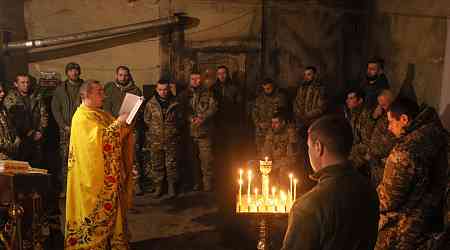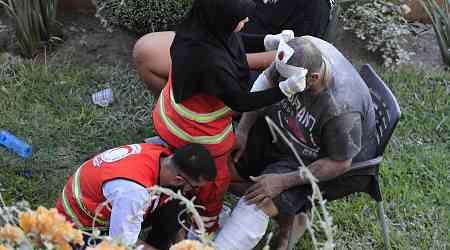
The 2024 U.S. general election will give voters the chance to decide on not just the next President, but also members of Congress, ballot measures, state representatives, governors, and more. While Election Day is Nov. 5, some early voting has already started.
Some states have enacted laws that could make voting more difficult in the 2024 election, according to the Brennan Center for Justice. To help you navigate the process, TIME’s staff has answered some common questions about voting—from how to vote early to when the polls close in your state.
[time-brightcove not-tgx=”true”]Here’s everything you need to know to cast your vote in 2024.
Who can register to vote?
Generally speaking, you can vote if you are: a U.S. citizen, a resident of your state, 18 years old as of Election Day, and registered to vote on or before your state’s voter registration deadline, according to USAGov.
People who aren’t U.S. citizens can’t vote in federal, state, and most local elections. Some people who have been convicted of a felony or who are currently incarcerated can’t vote, although these rules vary by state (you can read this guide from the U.S. Department of Justice to find out what the laws are in your state). Some people who have what USAGov defines as a “mental disability” might not be able to vote depending on the rules in their state (find out more about that here). If you’re a U.S. citizen living in a U.S. territory, you can’t vote for the President in the general election, according to USAGov. — Chantelle Lee
How can I check my voter registration status?
You can check if you’re registered to vote by going to the National Association of Secretaries of State’s website here. After you choose your state in the dropdown menu, you’ll be sent to the state’s election website. Most states ask you for information like your name, date of birth, and driver’s license number in order to check if your voter registration is active.
If you’re not already registered to vote, you may be able to register online, in person, or by requesting a form to be sent to your election board office, depending on your state. — C.L.
When is the deadline to register to vote?
The deadline to register to vote varies by state. Check the U.S. Vote Foundation’s website here to find your state’s deadline. — C.L.
What documents do I need to register to vote?
For most people, a valid driver’s license or state I.D. will be all you need in order to register to vote. If you don’t have either of these, you may still be able to register by using other types of documentation, like utility bills or bank statements. The exact documents required vary by state. You can check what types of documents your state requires here. — Anna Gordon
How do I vote early—and what are the benefits of early voting?
People who want to avoid long lines or who might not have time to go to their polling location on Election Day can take advantage of early voting.
The process for early voting differs depending on your state. Some states have already opened early voting, including South Dakota, Virginia, West Virginia, Idaho, Louisiana, and New Jersey. You can check when early voting starts and the rules in your state here.
Read more about early voting here. — C.L.
What’s the difference between absentee voting and vote-by-mail?
Absentee voting and vote-by-mail both allow voters who cannot cast their ballots in person to do so by sending in a ballot via the postal service. The primary difference between the two are the eligibility requirements.
In states where vote-by-mail exists, all registered voters are automatically delivered a vote-by-mail ballot to their registered address. Eight states—California, Colorado, Hawaii, Nevada, Oregon, Utah, Vermont, and Washington—conduct elections this way.
In states without vote-by-mail programs, individuals who cannot be physically present on Election Day must request absentee ballots ahead of time. There are often deadlines and rules that voters must meet in order to participate in the program, and some states may require individuals to have an excuse in order to be eligible for an absentee ballot. — A.G.
How do I request an absentee ballot?
If you live in the U.S., you can request an absentee ballot by visiting the National Association of Secretaries of State website and selecting your state from the drop down menu. Once you click your state, the specific requirements and procedures for absentee voting of your state will load on the webpage.
If you are a U.S. citizen who lives outside of the U.S., are in the military, or are a family member of someone in the military, you can request an absentee ballot via the Federal Voting Assistance Program. In order to fill in a ballot this way, you will need to know your state of voting residence and have access to a printer and Adobe Read version 6.0 or higher. — A.G.
How late are polls open?
Polling hours vary state by state—sometimes even county by county.
On TIME’s Map below, you can see when exactly the polls in your state close. Since poll closing times vary in North Dakota and New Hampshire, you can utilize search functions on each state’s respective website.

On Election Day, if you are already in line at a polling place when the polls close, you should stay in line. Voting does not end until the last person in line at the time the polls close gets to vote.
If anyone is asking you to leave, stay in the line and call or text the Election Protection Hotline, which has different lines for different language speakers. For English speakers, call 1-866-OUR-VOTE / 1-866-687-8683, for Spanish speakers, call 1-888-VE-Y-VOTA / 1-888-839-8682, for Arabic speakers, call 1-844-YALLA-US / 1-844-925-5287, and for Bengali, Cantonese, Hindi, Urdu, Korean, Mandarin, Tagalog, or Vietnamese, call 1-888-274-8683. —Rebecca Schneid
What’s on my ballot?
For the 2024 general election, the presidential race between Donald Trump and Kamala Harris isn’t the only choice on the ballot.
The other decisions facing voters vary by state and municipality. Ten states—including Florida and Nevada—will vote on measures that will allow voters to decide whether to protect abortion rights. Some states, including Alaska and Missouri, will vote on issues related to minimum wage.
Read More: Here’s Where Abortion Will Be on the Ballot in the 2024 Election.
There are multiple ways for voters to request a sample ballot so they can see both what propositions will be on their state ballot and what local, state, and federal positions will appear on their ballot. Vote.org and Ballotpedia both have sample ballot lookup tools.
If you’d rather go through official government websites, many states—including Minnesota, Wisconsin and New York—have their own “What’s On My Ballot” pages, in which citizens can place their address and receive a sample ballot. — R.S.





























